The saying "Cleanliness is next to godliness" isn't just a phrase to live by ourselves; it's also an essential mantra for our pets.
The environments in which our pets live, play, and especially where they relieve themselves play a crucial role in their overall health and well-being.
Among pets, cats are unique in their need for a clean, sanitary space for their bathroom needs.
The state of a cat's litter box doesn't just affect their willingness to use it, but also their health.
This article will explore the critical importance of maintaining a clean litter box and the potential infections that could arise from neglecting this duty.
Litter Box Risks

As a dedicated cat guardian, keeping the litter box clean is your duty.
But could a filthy litter box actually cause your cat to become sick?
Yes, a consistently dirty litter box absolutely puts your cat at risk of infection. Bacteria, parasites, and mold thrive in litter with urine and feces.
Let's explore the reasons behind these health hazards.
Why Cat Litter Infections Happen

When litter goes unchanged, the ammonia in cat urine causes harmful bacteria like E. coli and Salmonella to multiply rapidly.
Damp, unsanitary conditions also enable intestinal parasites and ringworm mold to take hold.
These germs and toxins then transfer to your cat's paws and fur.
The microbes can infect their respiratory and digestive systems through licking and grooming, sometimes fatally.
Also read: How Often To Change Clay Cat Litter
Kittens, seniors, and pregnant cats are most vulnerable!
Types of Infections
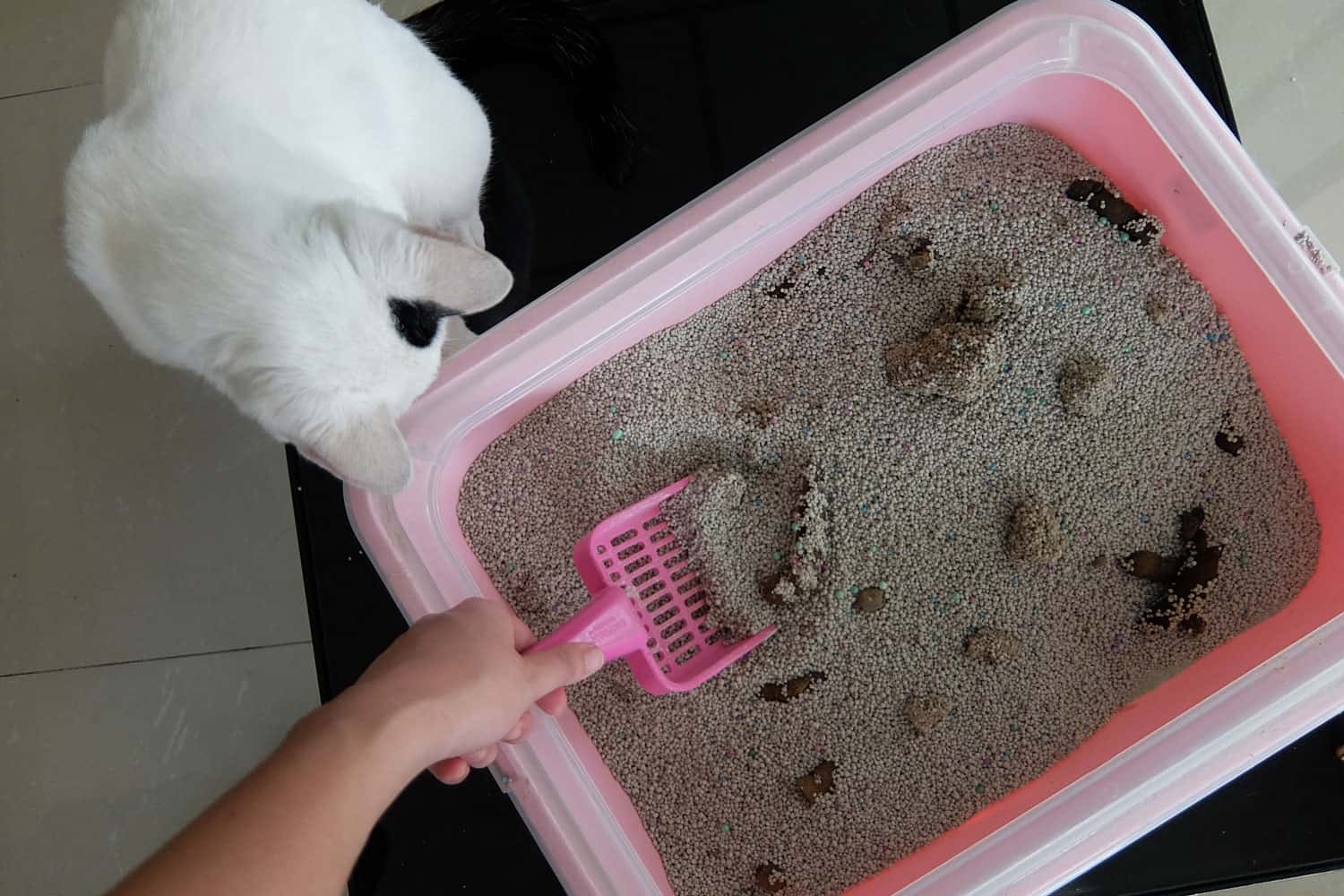
A dirty litter box can be a breeding ground for many harmful microorganisms.
These can be particularly detrimental to cats, who come into direct contact with the litter and then groom themselves, inadvertently ingesting or getting exposed to these pathogens.
Here's a deeper dive into the types of infections cats might contract from unsanitary litter conditions:
Urinary Tract Infections (UTIs):
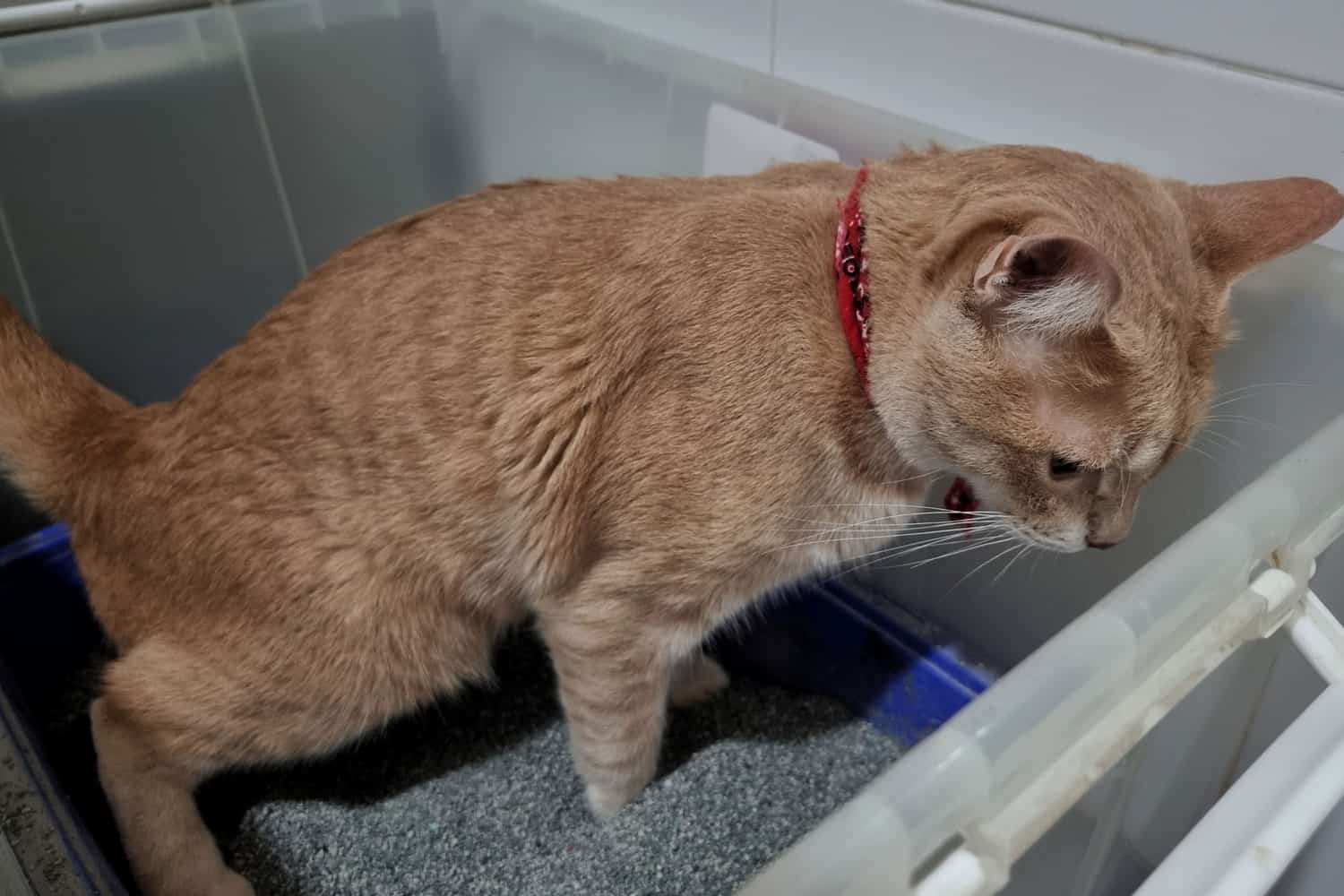
Cats can easily contract UTIs when they come into contact with bacteria present in a dirty litter box.
Symptoms of a UTI in a cat include frequent urination, blood in the urine, and painful urination. If you suspect your cat has a UTI, seek veterinary care immediately.
Bacterial Infections:
E. coli and Salmonella: These harmful bacteria thrive in dirty environments and can lead to severe gastrointestinal distress in cats.
Symptoms can include vomiting, diarrhea, lethargy, and decreased appetite. Cats with weaker immune systems, such as kittens or elderly cats, are at a higher risk of these infections.
Fungal Infections:
Ringworm: Contrary to its name, it is not a worm but a fungus. A dirty litter box can be a hotspot for ringworm spores.
Cats infected with ringworm might show symptoms like hair loss, scaly or crusty skin, and red, circular patches.
Parasitic Infections:
Giardia: Giardia is a protozoan parasite that can cause diarrhea in cats. A cat might get infected by stepping on contaminated litter and later licking its paws.
Toxoplasma gondii: This parasite can be found in cat feces. While many cats might not show symptoms, it can be especially dangerous if transmitted to humans, especially pregnant women.
Regular cleaning and changing the litter are pivotal to preventing the spread of this parasite.
Awareness of these potential infections underscores the importance of diligent litter box maintenance. Ensuring cleanliness makes our feline companions more comfortable and contributes significantly to their health and longevity.
How to Prevent Litter Box Infections
Adhering to a few essential practices can create a clean, safe space contributing to your cat's optimal health.
Here's how to establish effective litter box hygiene and minimize the risk of infections:
1. Daily Waste Management
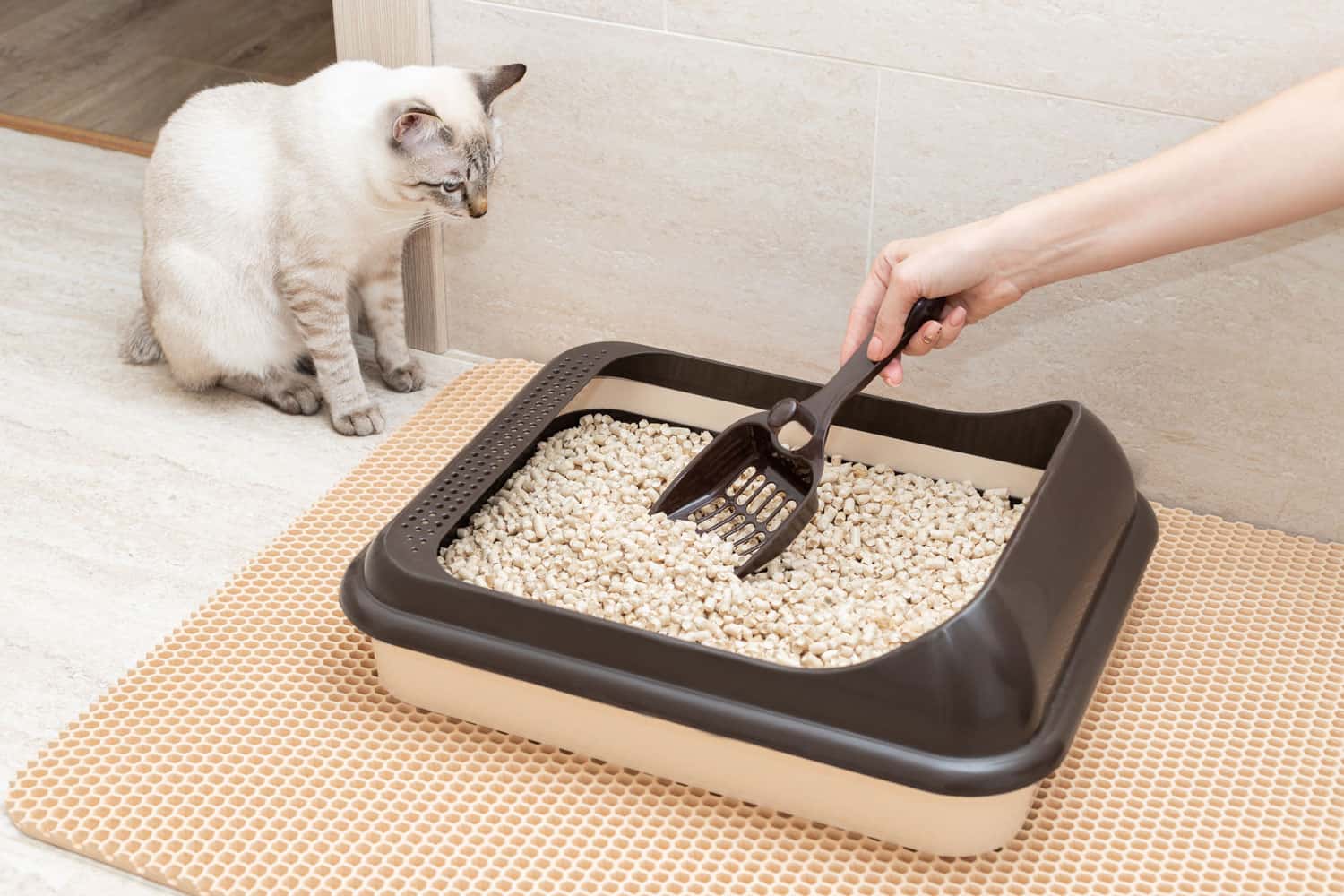
Regular scooping is a fundamental step in preventing infections.
Clear the litter box of waste and clumps daily to minimize bacterial growth and ensure a clean space for your cat.
2. Routine Litter Replacement
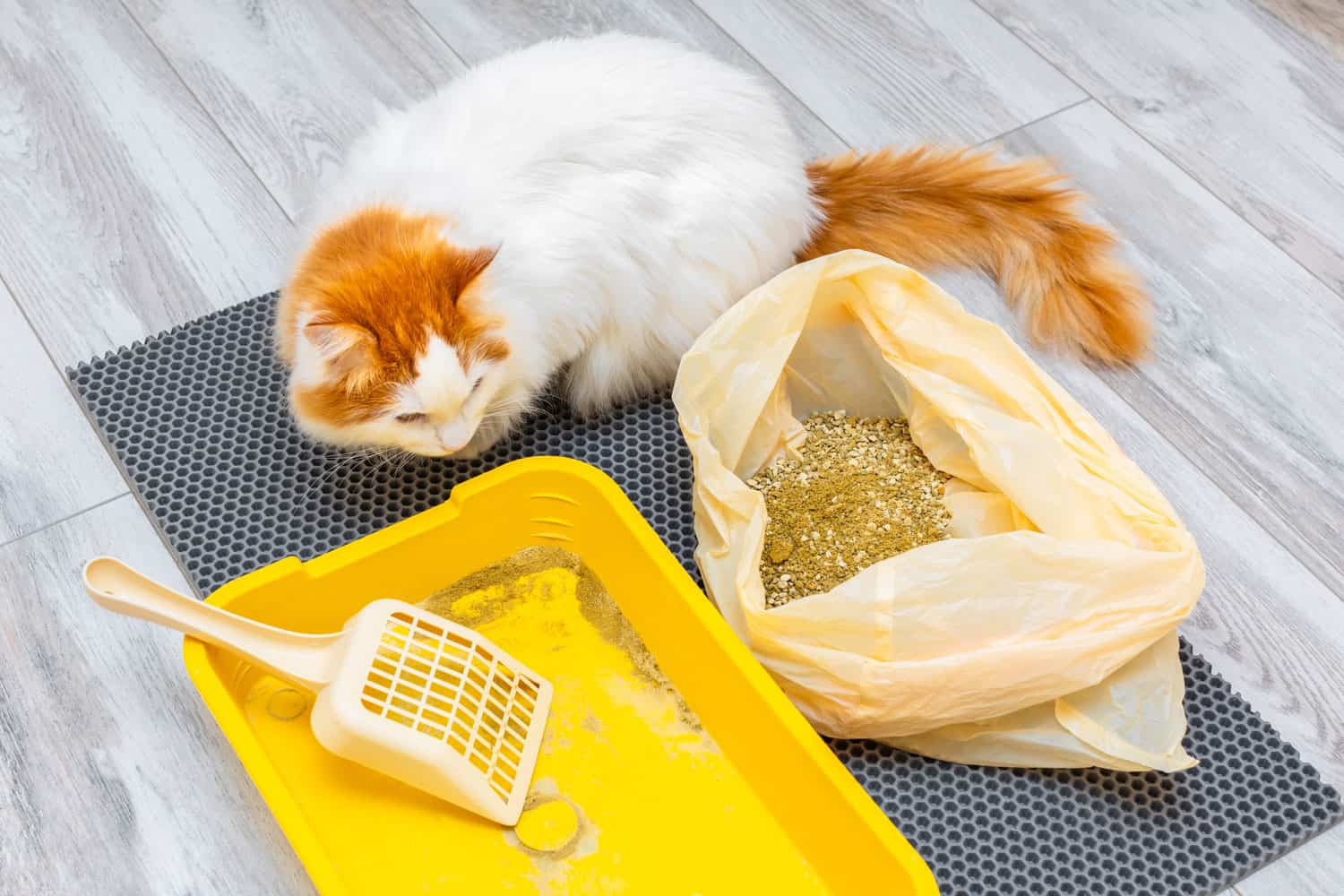
A key aspect of litter box hygiene is the regular replacement of litter.
Plan to replace all the litter in the box every 1-2 weeks. This practice prevents the accumulation of odor, bacteria, and potentially harmful pathogens.
3. Thorough Cleaning
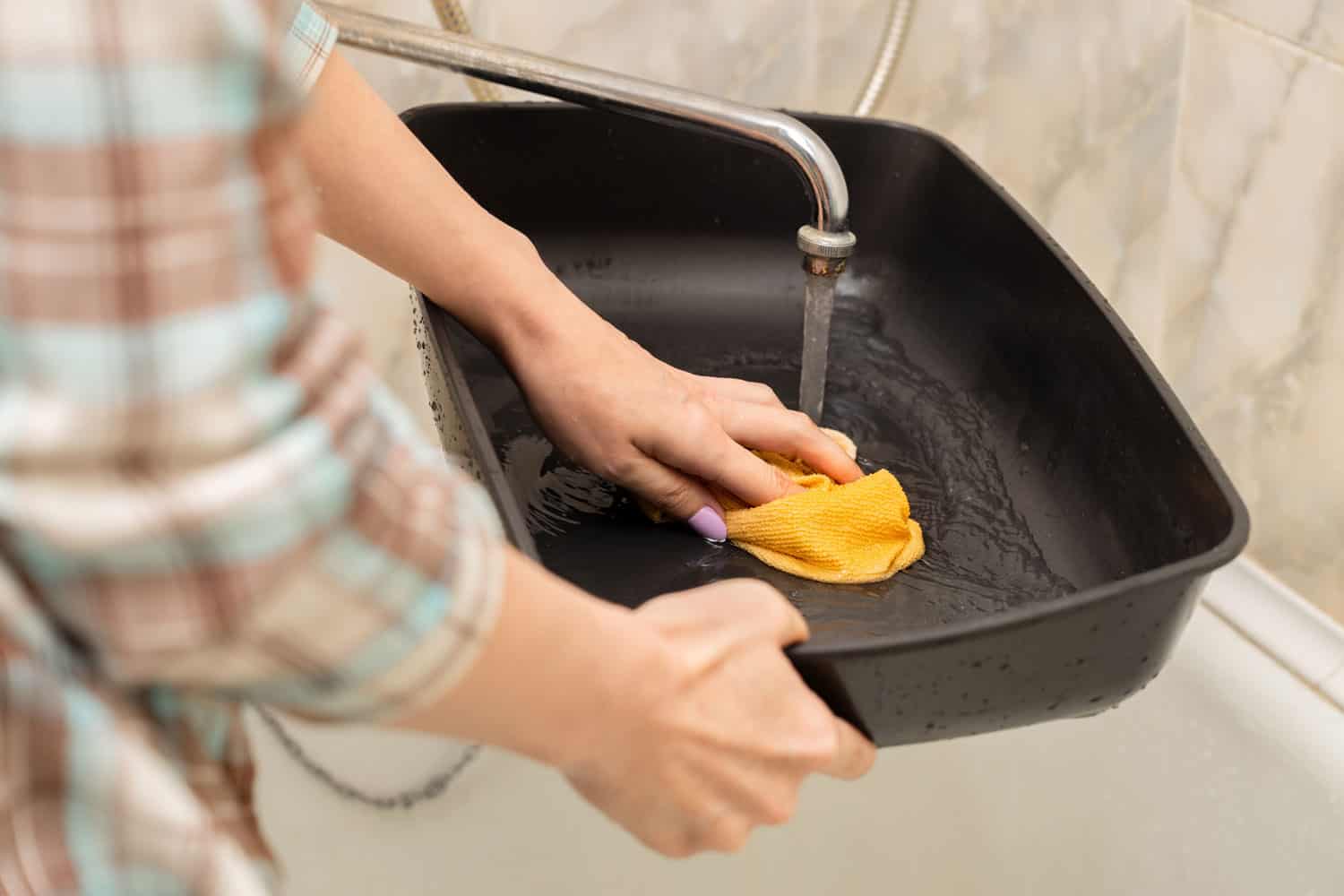
Beyond scooping, periodic deep cleaning is crucial.
Thoroughly wash the litter box with mild soap and water at least once a month or more frequently if needed.
A thorough cleaning helps eliminate any lingering germs and maintains a hygienic environment.
4. Safe Disinfection
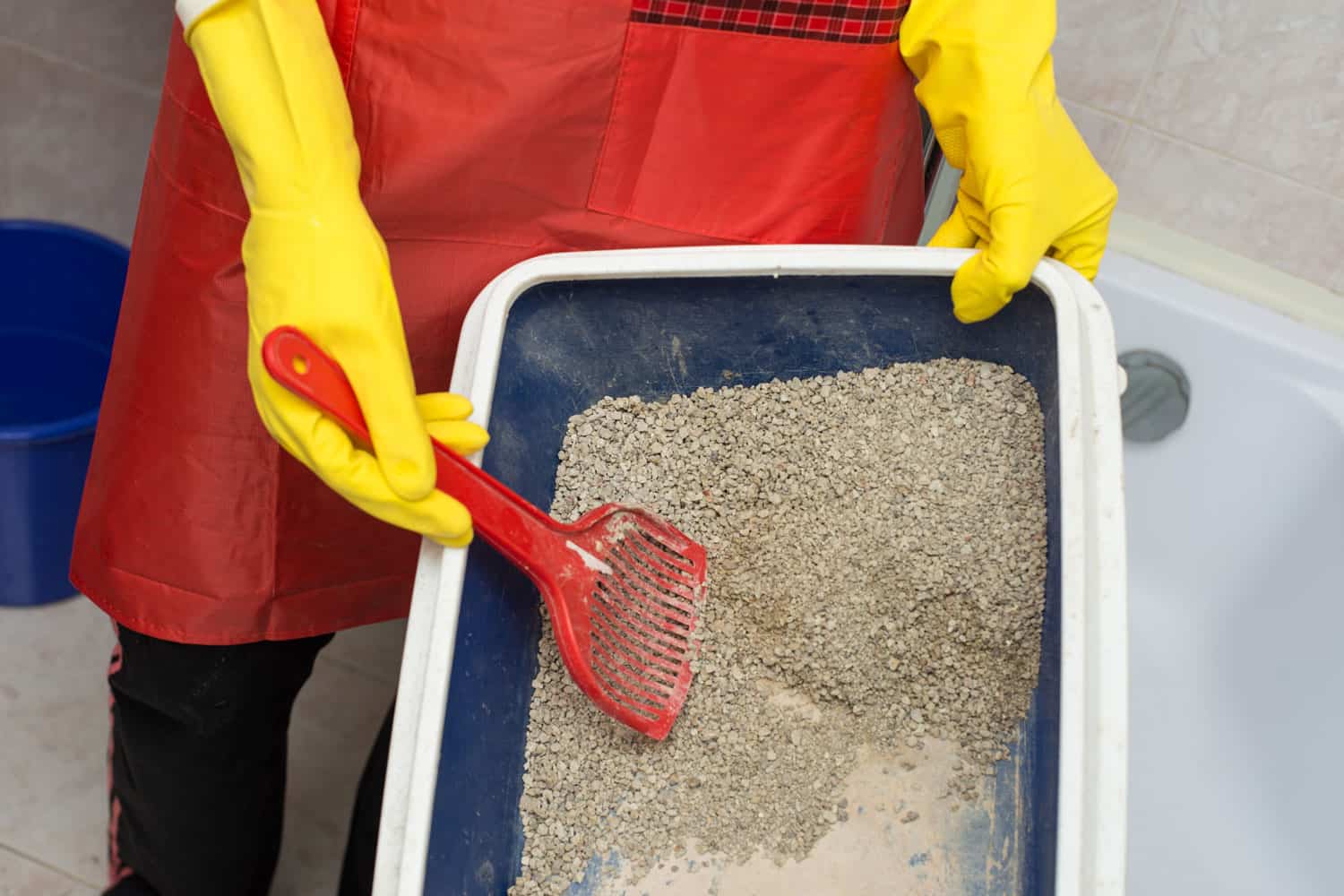
Occasional use of cat-safe disinfectants further enhances cleanliness.
Opt for disinfectants specifically formulated for feline use, as certain chemicals can harm cats.
Click here to see cat-safe disinfectants on Amazon.
Following the manufacturer's instructions, use these products to sanitize the litter box and minimize the risk of infections.
5. Vigilant Health Monitoring
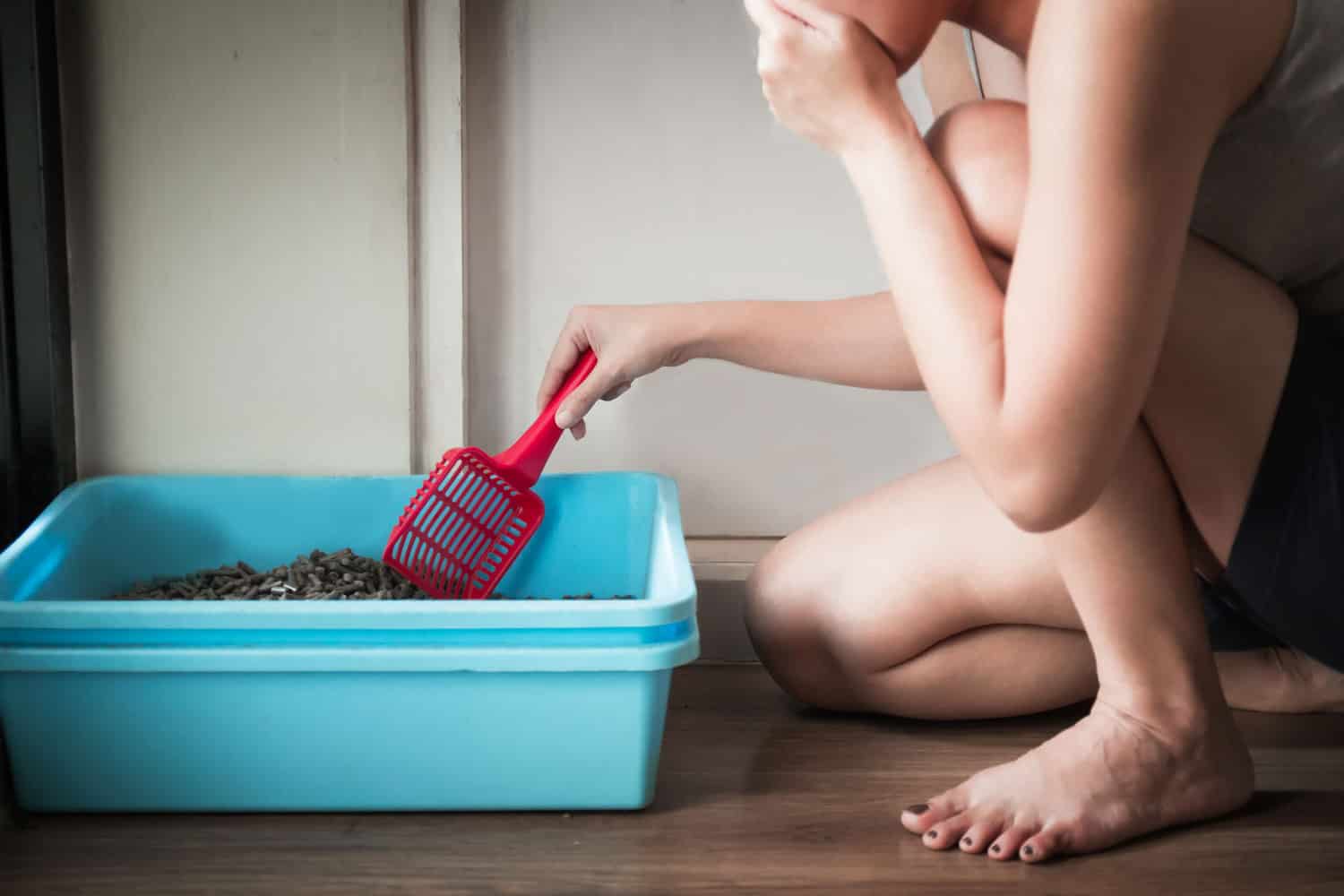
The litter box can serve as an early indicator of your cat's health.
Regularly observe your cat's bathroom habits and look for signs of illness, such as changes in stool consistency, excessive diarrhea, or lethargy.
Detecting these signs promptly allows for timely veterinary intervention.
Incorporating these practices into your cat care routine establishes a proactive approach to preventing litter box infections.
The Final Scoop: Cleanliness Equals Cat Health
The cleanliness of a cat's litter box is undeniably linked to its health. As highlighted, a neglected litter box can be a hotspot for harmful bacteria, fungi, and parasites, leading to various infections.
Kittens, senior cats, and those with weakened immune systems are particularly at risk. Cats inherently seek cleanliness, so a tidy litter box prevents medical issues and aligns with their natural instincts.
In short, a clean litter box is essential for our feline friends' health and happiness. Prioritize their well-being by keeping their environment pristine.
Also read: How Many Litter Boxes Should You Have for One Cat?




